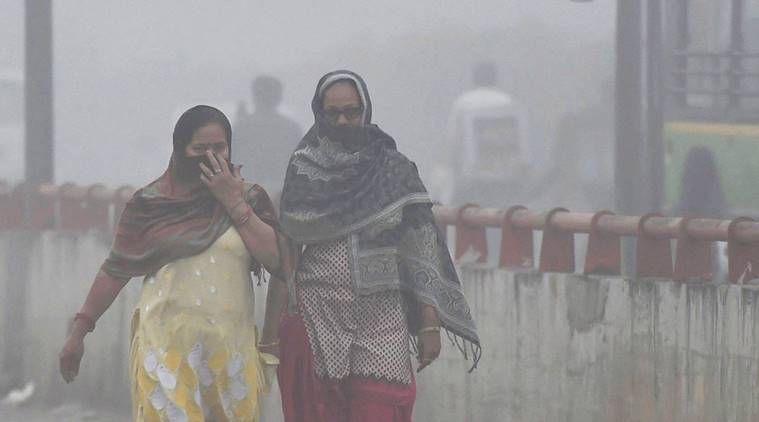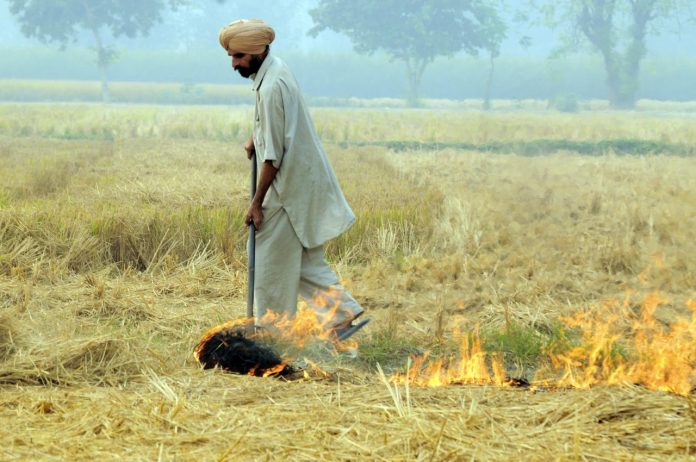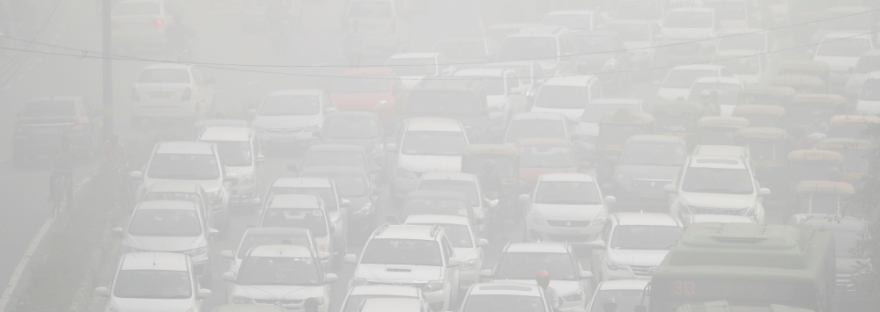The Great Smog of Delhi is an ongoing severe air-pollution event in New Delhi and adjoining areas in the National Capital Territory of India, in November 2017. Air pollution at this time peaked on both PM 2.5 and PM 10 levels. It has been reported as one of the worst levels of air quality in Delhi since 1999.
The current majority of analysis sources are hinting towards colder weather, stagnant winds trapping the various sources of smoke. Primary sources of smoke being those from stubble burning, lit garbage, road dust, power plants, factories, and vehicles.
What is Smog?
The word smog comes from the words smoke and fog combined. Smog itself is formed from a mixture of these two elements and any other airborne pollutants. It first started to form in England during the first years of the industrial age. Fog, which forms from evaporated water, would grab the smoke from coal factories and would trap it on the ground. This is what started to cause smog.

Why is New Delhi smog so bad?
Densely populated Delhi is one of the most polluted cities on the planet due to pollution from diesel engines, coal-fired power plants, and industrial emissions. In addition, farmers illegally burning crop stubble after the harvest in northern India, have exacerbated the problem.
An estimated 35 million tonnes are set afire in Punjab and Haryana every year, which contributes to the haze and smog in New Delhi.
India’s Environment Pollution Authority has warned: “In terms of air pollution, things are expected to get much worse in the coming days.”
What are the effects of the smog?
Enveloped by a thick, choking shroud of toxic smog, New Delhi has declared a public health emergency.
Pollution trackers suggest the fog has reached the worst level so far this year and is so high that breathing in the air has been compared with being worse than smoking 50 cigarettes a day.
Health effects
The government of Delhi has declared a health advisory
- Breathlessness
- Chest constriction
- Irritation of eyes
- Asthma
- Allergy
So how should you fight with the forceful impact of smog?
It can be reduced by implementing modifications in your lifestyle, decreasing the consumption of fuels that are non-renewable and by replacing them with alternate sources of fuel which will reduce toxic emissions from vehicles.
Burning of agricultural biomass residue, or Crop Residue Burning (CRB) has been identified as a major health hazard. This can easily be avoided by utilization of paddy straw in the form of biomass pellet and briquette fuel, which can be commercially sold as the main fuel for an industrial boiler, as a replacement for coal.

At Hitech Agro, we use agricultural waste such as paddy crop and rice straw in the manufacture of biomass fuel like pellet and briquette. We provide services in the field of Municipal Solid Waste and Biomass Processing. We help people use all types of Biomass, Municipal and Industrial residues to produce Clean, Affordable, and Renewable Energy.
Businesses:
There are many ways that businesses can reduce nutrient pollution, including:
- Manage and Reduce Emissions
Leading businesses are taking steps to understand and manage their greenhouse gas emissions by preparing annual greenhouse gas inventories and setting long-term targets to reduce emissions. - Increase Energy Efficiency
Improving energy efficiency not only reduces greenhouse gas emissions into the atmosphere, it is good for a corporation’s bottom line. Developing and implementing an effective corporate energy management program allows companies to manage energy with the same expertise used to manage other aspects of their business. - Buy Renewable Energy
Buying renewable energy can help reduce your organization’s environmental impact while also providing a number of other valuable benefits
Individuals:
- Conserve Energy
Air pollution from energy production leads to acid rain, excess greenhouse gases, and health risks. One important step you can take to minimize airborne nutrient pollution is to conserve energy. You can do this by:- Turning off lights, computers, televisions, video games and other electrical equipment when you’re not using them.
- Buying equipment that uses less electricity, including lights, air conditioners, heaters, refrigerators and washing machines. Energy Star-certified products and buildings use at least 10 less energy than standard models.
- Limiting the use of air conditioning.
- Installing a programmable thermostat.
- Minimize the Miles
Driving cars and trucks also produces significant amounts of nitrogen oxide emissions. To help cut down on air pollution from cars, you can consolidate driving trips, carpool or take public transportation, such as buses and trains. When possible, consider walking or biking instead of driving.
Environmental protection is an individual and personal responsibility for all human beings since we are all part of the biosphere. Let us all step up and do our part before it is too late.
Contact us for more details.
References
- Wikipedia
- AlJazeera
- The Telegraph
- conserve-energy-future
- Image credit – [Cathal McNaughton/Reuters]


